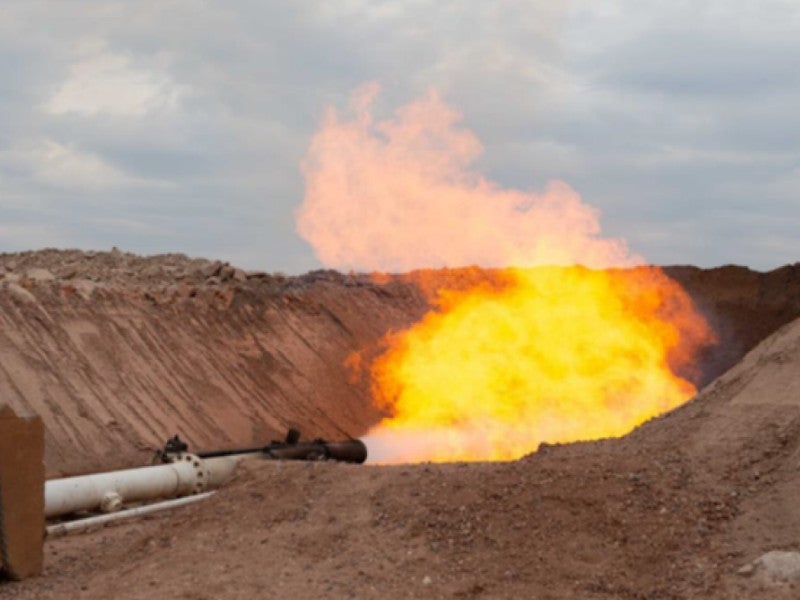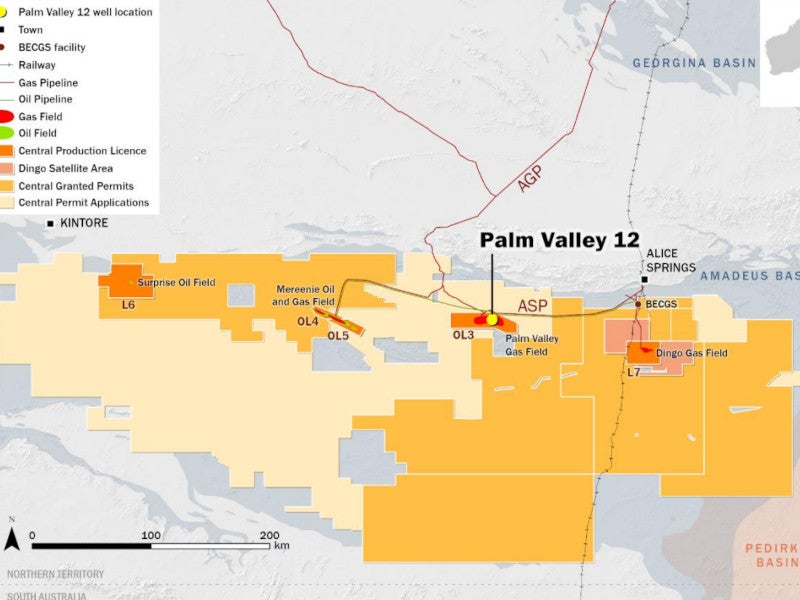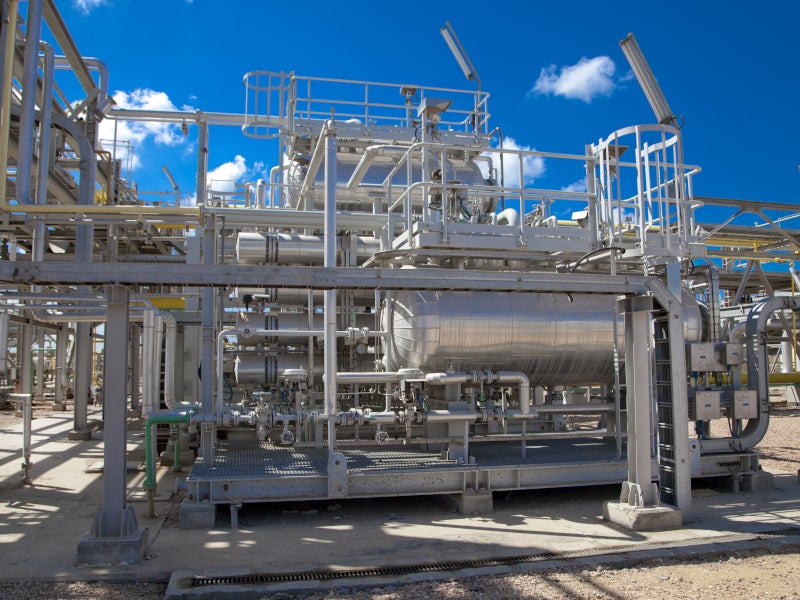The Palm Valley gas field is situated 100km west of Alice Springs in Australia’s Northern Territory. It produced its first gas in 1983.
The field is managed by Central Petroleum (CTP) with a 50% ownership interest, alongside New Zealand Oil & Gas (NZOG, 35%) and Cue Energy Resources (15%).
The field has experienced a substantial increase in production after the successful commissioning of the Palm Valley 12 (PV12) production well in late November 2022, resulting in a 140% replacement of gas production in little more than 12 months.
The 2P reserves of the Palm Valley gas field are estimated at 13.4 PetaJoules (PJ), as of June 2023.
Location
The Palm Valley field is located within a single permit area, covering a total of 616km² in the Amadeus Basin, under the lease OL 3 in Australia.
Palm Valley field discovery and geology
The field was discovered in 1965 through the Palm Valley 1 well. The gas is primarily contained within an extensive fracture system in the Lower Stairway Sandstone, Horn Valley Siltstone and Pacoota Sandstones at depths ranging from 1,800m to 2,200m.
The field’s geological structure spans approximately 29km in length and 14km in width.
Palm Valley field production details
The gas field includes four gas producers, one well for water re-injection and five wells for pressure monitoring. It underwent a shut-in phase from 2015 to 2018 after yielding a cumulative production of 183PJ.
The gas, produced at low pressure in the field, is transported via flow lines to a production facility for compression and dehydration before being supplied to the transmission pipeline, servicing customers in the Northern Territory and the East Coast gas market.
Palm Valley field appraisal
The successful drilling of horizontal wells Palm Valley 13 (PV13) and PV12 provides support for further drilling activities aimed at accessing gas reserves and enhancing production levels at Palm Valley.
In May 2019, the commissioning of the PV13 well increased production to around seven TeraJoules/day (TJ/d) until mid-2020, reaching a capacity peak of 13TJ/d during that time.
The Pacoota-1 (P1) formation is currently the active production zone at Palm Valley currently.
The PV12 drilling operation, conducted horizontally to a measured depth of 3,039m within the P1 sandstone, demonstrated gas flow at a rate of 11.8 million standard cubic feet per day (Mscfd) during testing in October 2022. It commenced production as a well in late November 2022.
The PV12 production well led to a rise in the average production within the Palm Valley field, escalating from 5.2TJ/d in October 2022 to a peak of 13.5TJ/d in January 2023.
A successful PV12 lateral well in the P1 unit of the Pacoota formation was integrated into the existing production facilities, with gas sales targeting the robust Northern Territory and wider Australian East Coast markets.
Gas supply agreement
New Zealand Oil & Gas signed a gas supply agreement with Incitec Pivot Fertilisers in December 2023 to supply 0.67PJ of gas in 2024.
The gas will be combined with that from other joint venture partners in Palm Valley, CTP and Cue Energy Resources, to fulfil a total supply commitment of 1.74PJ.
Proven reserves within the Amadeus Basin
CTP added an extra 5.9PJ of 2P gas reserves as of June 2023. The increase brings the total 2P gas reserves to 75PJe across all its producing assets, including the Palm Valley field, the Mereenie oil and gas field and the Dingo field.
The increase represents an 8% rise before production and a 2% rise after production, attributed to recent drilling activities and production results at the Palm Valley field, as well as updated reservoir modelling at the Dingo field.
Future exploration plan
The Arumbera sandstone, also the producing zone at Central’s Dingo gas field located approximately 120km east, holds a mean prospective resource estimate of 123PJ of gas (61.5PJ net to Central) and will be pursued in subsequent exploration efforts.
The deeper Arumbera sandstone, potentially rich in gas resources, remains an exploration target for future programmes at Palm Valley.




